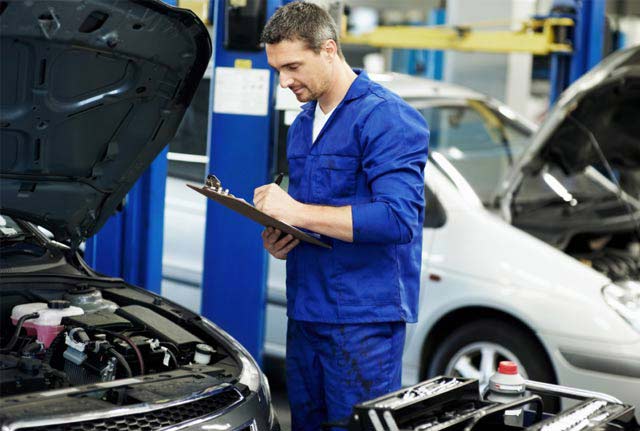All Categories
Featured

The automobile fixing market is swiftly advancing with the introduction of new modern technologies that are improving just how cars are detected, serviced, and fixed. From the fostering of expert system (AI) to the combination of electric vehicle (EV) maintenance, these advancements are improving fixing performance, lowering prices, and improving the general consumer experience. In this post, we'll explore a few of the most remarkable automobile innovation developments out of commission that are aiding modern mechanics remain in advance of the curve.
- AI-Powered Diagnostic Tools. Artificial knowledge is changing the diagnostic procedure in automotive fixing. Mechanic shops can now make use of advanced scanners that make use of AI to identify problems, forecast prospective failings, and also advise particular fixings.
- Electric and Hybrid Lorry Repair Works. As the need for electric vehicles (EVs) and crossbreeds grows, so does the requirement for specialized repair service technologies and training. In addition, many fixing shops are currently spending in electric vehicle-specific tools, such as high-voltage insulation testers and billing terminal diagnostics, to make certain that specialists can securely and effectively service these advanced automobiles.

- 3D Printing in Auto Repair. 3D printing has become an effective tool for vehicle repairs, specifically when it pertains to producing hard-to-find or ceased parts. This cutting-edge technology allows service center to print and create personalized components on-demand, reducing delay times and expenses linked with ordering parts from suppliers. Whether it's an uncommon trim piece, a broken engine element, or an elaborate indoor component, 3D printing can create high-quality substitutes that recover the automobile to its original state. This technology is particularly useful for recovering vintage cars or fixing cars that no more have easily available substitute parts.
- Robotics and Automation. Robotic innovation is being incorporated right into the automobile repair process to enhance efficiency and precision. Robotics are being made use of for repeated tasks such as tire rotations, oil adjustments, and brake maintenance, enabling service technicians to concentrate on more complicated repair work. These robots can run with high levels of accuracy, decreasing the risk of human mistake and boosting the top quality of the repair work. In the future, robotics might tackle even much more innovative fixing functions, allowing quicker turn-around times and boosting the overall customer experience.
- Augmented Fact (AR) for Service Technician Help. Augmented fact is transforming the way service technicians accessibility repair service details and carry out tasks. By using AR glasses or tablets, service technicians can overlay electronic info, such as repair work manuals, layouts, and detailed directions, directly onto the vehicle they are functioning on.
- Predictive Maintenance via IoT. The Internet of Things (IoT) is transforming vehicle maintenance by connecting cars to networks that gather information in real time. IoT sensors keep track of an automobile's health and wellness and send out vital data, such as oil levels, tire stress, engine temperature, and battery condition, to cloud-based systems. This data is examined by predictive upkeep formulas to identify prospective concerns before they lead to malfunctions. If a sensing unit identifies unusual wear in the brakes, the system can alert the vehicle driver or service technician prior to it comes to be a significant problem. Predictive upkeep helps customers stay clear of unanticipated repair work expenses and prolong the life expectancy of their lorries.

- Telematics and Remote Diagnostics. Telematics systems, which are widely made use of in contemporary lorries, enable remote diagnostics and real-time surveillance. These systems send out information concerning a lorry's performance, consisting of engine health, tire problem, and liquid degrees, to service facilities and producers. If a trouble occurs, service technicians can identify the concern remotely, commonly taking care of software program glitches or updating the car's firmware without the demand for a physical service appointment. In some cases, technicians can also repair issues or arrange a consultation before the car shows up at the service center. This remote strategy to diagnostics enhances convenience and decreases downtime for cars and truck proprietors.
- Lorry Information Sharing for Improved Service. Vehicle data sharing is one more emerging fad that's assisting service center supply faster and a lot more customized services. With accessibility to thorough data from a lorry's previous solution background, including previous repairs, parts substitutes, and performance records, technicians can extra properly evaluate current issues. By leveraging this data, service center can provide tailored options based upon the automobile's distinct history, helping to prevent future concerns and boosting long-term vehicle efficiency. Furthermore, repair service stores can use lorry information to establish customized maintenance schedules that keep the cars and truck running efficiently and prevent unneeded failures.
Final thought. The automotive fixing industry is evolving at an unmatched price, thanks to the continuous improvements in technology. AI-powered diagnostic tools, robotics, 3D printing, and IoT connectivity are just a few instances of the innovative modern technologies transforming the way lorries are fixed. These innovations not only boost repair work efficiency yet also enhance the top quality of solution and consumer contentment. As the industry remains to accept these innovations, service center that stay current with the current strategies and devices will be better outfitted to meet the requirements of contemporary lorry owners. For auto owners, these innovations mean much faster, much more exact repair services, increased safety and security, and a longer-lasting car.
Latest Posts
Change Your Home with Resilient Hardwood Flooring from Carpet Interiors Floor & Home
Published Apr 19, 25
1 min read
Flooring Professionals That Treat You Like Family
Published Apr 19, 25
1 min read
Reasons to Pick NAPA AutoCare? Montclare Auto Repair Has You Covered
Published Apr 19, 25
2 min read
More
Latest Posts
Change Your Home with Resilient Hardwood Flooring from Carpet Interiors Floor & Home
Published Apr 19, 25
1 min read
Flooring Professionals That Treat You Like Family
Published Apr 19, 25
1 min read
Reasons to Pick NAPA AutoCare? Montclare Auto Repair Has You Covered
Published Apr 19, 25
2 min read